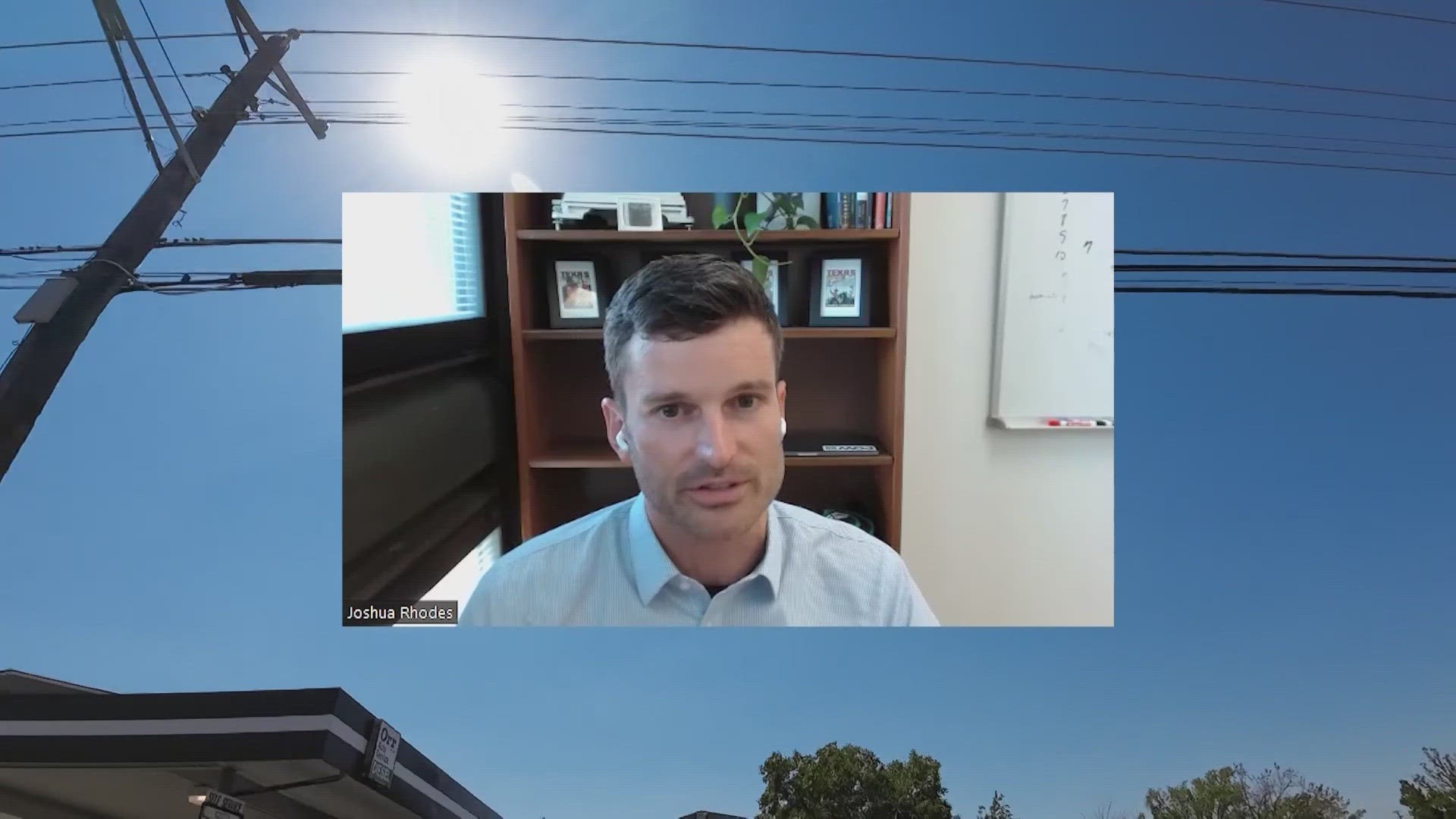DALLAS — The Texas power grid entered level two emergency operations Wednesday, Sept. 6 -- a first since the deadly winter storm of February 2021.
Had instability continued another 15 minutes, ERCOT would have started rolling outages to preserve the grid's integrity.
The grid manager has repeatedly asked Texans to conserve power throughout these last few months. But Wednesday's scare -- it was the 11th time Texans had been asked to conserve energy this summer -- represents the state's closest brush with an electricity shortfall in two years.
What happened?
Across the state on Wednesday, triple-digit temperatures prompted residents to run their air conditioners -- typically the largest load on the state's power grid.
At Wednesday's peak, Texans demanded about 83 gigawatts of electricity.
Though demand did not eclipse the 85 gigawatt record set in August, electricity supply waned Wednesday. Wind turbines generated about one-third the electricity they'd produced on average each day during the last month.
Some coal and natural gas plants were offline, although outages were not at a level ERCOT considers extreme.
In many ways, grid conditions Wednesday mirrored a handful of other days this summer that did not require emergency operations.
But grid frequency -- a real-time measurement of the supply-demand balance -- began to destabilize soon after ERCOT issued a "transmission watch" for a key power line. An artery carrying electricity from coastal Texas generators to Dallas-Fort Worth consumers was too hot.
"The more energy those lines are moving, the hotter they get," University of Texas energy researcher Josh Rhodes said. "The hotter they get, the less energy we can push through them."
Overloaded power lines can burn, ruining expensive equipment and potentially sparking fires.
To prevent severe damage to critical transmission infrastructure, ERCOT pays generators to scale back electricity production. This happens even when Texas desperately needs more power to meet demand.
Texans paid electricity generators about $2 billion to curtail operations because of transmission congestion in 2022, the operator's independent watchdog reported last year.
On Wednesday, ERCOT says such a transmission limitation "restricted the flow of generation out of South Texas to the rest of the grid."
Under ideal conditions, wind energy should ramp up as solar energy ramps down. Coastal wind turbines begin spinning around sunset.
But on Wednesday, Bloomberg reports, southern Texas generators curtailed at least a gigawatt of coastal electricity production just as solar power went offline. And demand started to outpace supply.
"If transmission can't get that south Texas wind energy to other parts of the state -- Houston, Dallas, San Antonio, Austin -- we're going to have a problem," Rhodes said.
He and other researchers have long argued that Texas needs to upgrade its existing transmission infrastructure and build new lines, connecting renewable energy sources to consumers in bigger cities.
This problem has been evident for years, Rhodes contends.
But Wednesday likely marks the first time transmission congestion has contributed to an emergency.
How Texas escaped outages
Despite the close call, Texas's backup system worked as intended. Batteries supplied a record amount of stored electricity to the grid on the day.
Texas also purchased some electricity from federally-regulated grids through small interconnections bordering the state line.
Conservation efforts worked too, although most residential consumers probably did not participate.
Instead, some of the state's largest power consumers reduced electricity usage or shut down operations entirely. The state pays bitcoin minors, supercomputer operators, industrial manufacturers and data centers to conserve in times of need.
In August, Texas paid one bitcoin mining company nearly $32 million not to operate. In a statement to shareholders, bitcoin mining operation Riot said it made more money off conserving power than it did mining cryptocurrency.
"It's ridiculous they get this money and the regular Texas consumer does not," University of Houston energy fellow Ed Hirs said.
While some utilities offer credits to people who agree to reduce usage during peak hours, most Texans have been shut out of lucrative conservation programs. The state does not pay residential customers or small businesses to cut back, even as industrial customers earn millions.
"The generators really don't want to see their customers suddenly become their competitors," Hirs said. "They don't want to see ERCOT returning money to the consumers when the generator thinks it should be going to their side of the business."
But for the first time, ERCOT leaders have expressed interest in including residential customers in demand response programs. The grid operator has partnered with Texas A&M to study the potential impact that could have on grid reliability.
"We're wanting to understand the potential of those areas," ERCOT CEO Pablo Vegas said. "That way, we can understand the magnitude of what it could represent and what potentially the cost would be if we were to invest and incentivize the development of that. Then we can use that to compare against other options to drive reliability."

